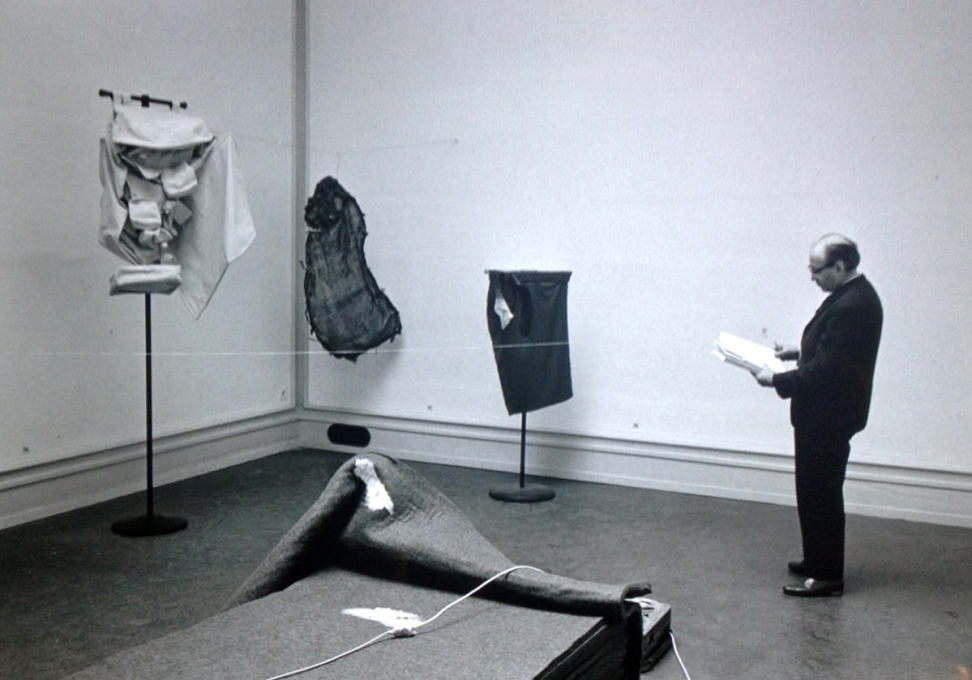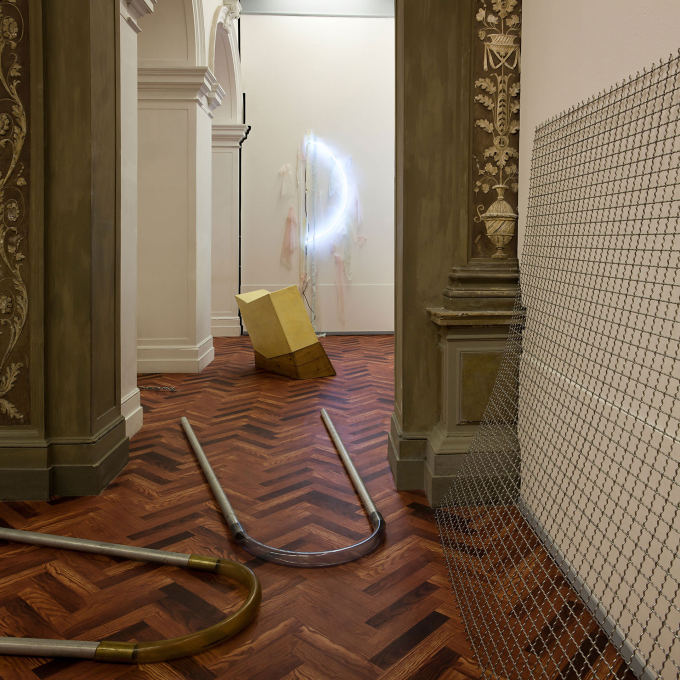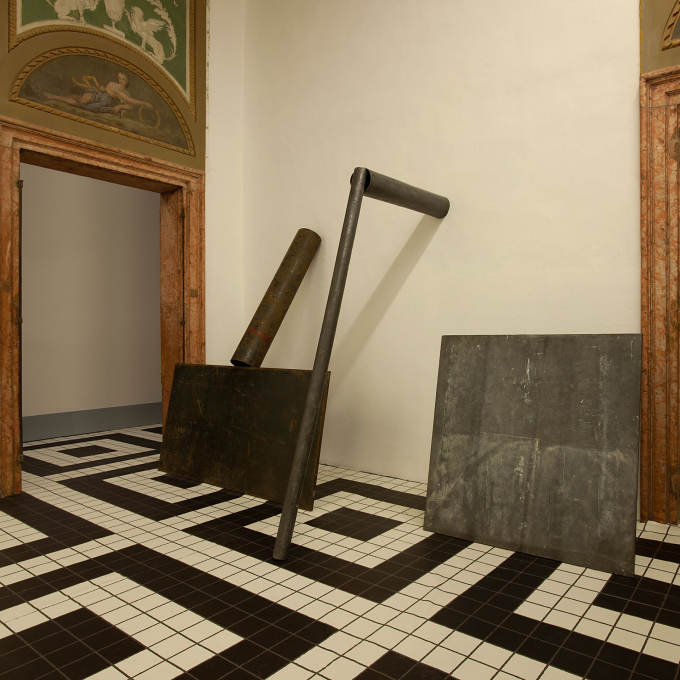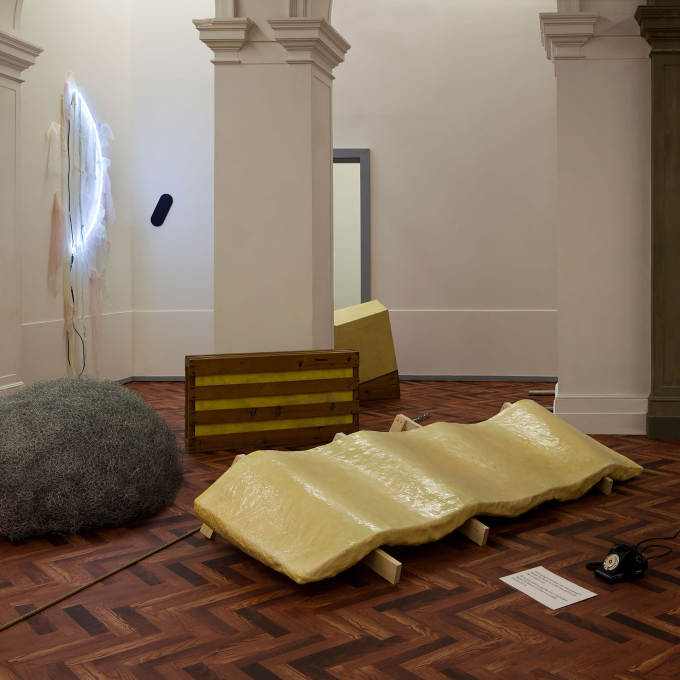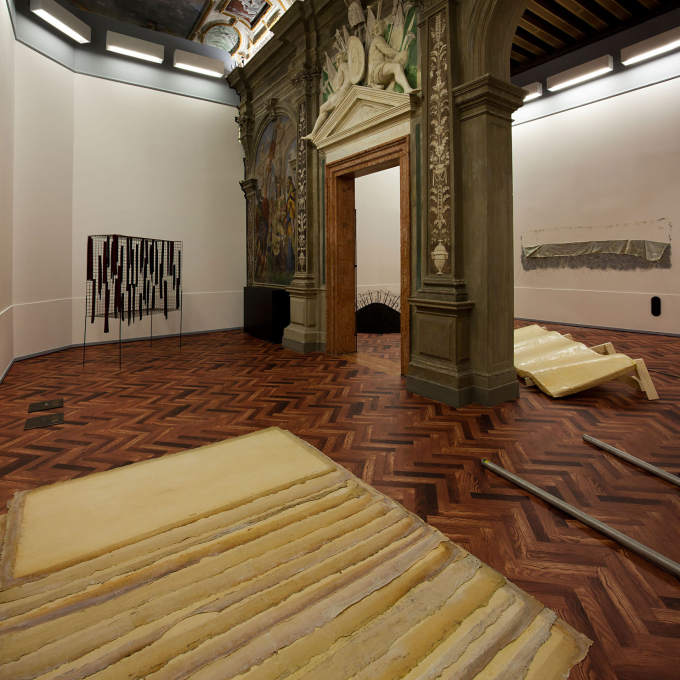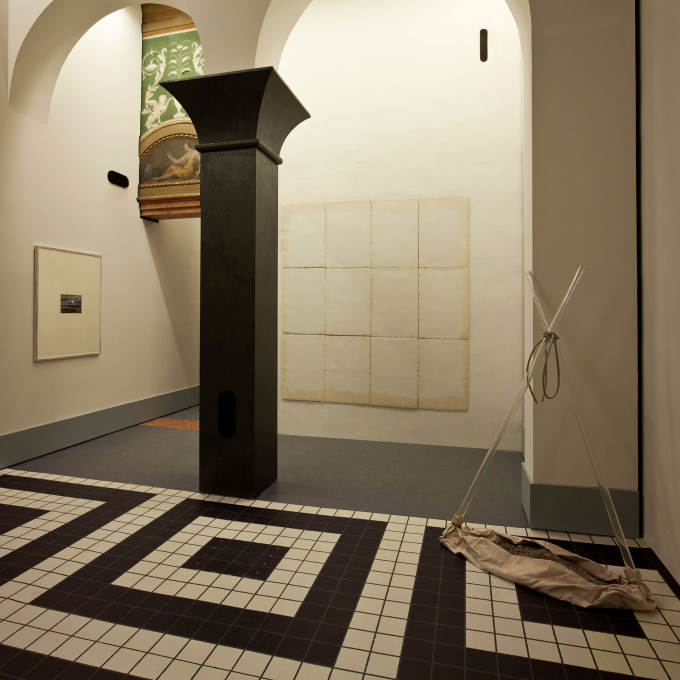The notion of a traveling exhibition is a beloved form of exchange between individual cultural institutions. But can an art exhibition be recreated and shown again after 44 years? Germano Celant, Thomas Demand, and Rem Koolhaas gave it a try.
The idea sounds simple and promising enough: combine an alluring exhibition space with stars from the worlds of art and architecture, and bring an old exhibition back to life. Running parallel to the Venice Art Biennale, Fondazione Prada has recreated the seminal 1969 exhibition When Attitudes Become Form in the baroque palazzo Ca’ Corner della Regina, under the direction of curator Germano Celant in collaboration with artist Thomas Demand and architect Rem Koolhaas. Even before the official opening, the reconstructed show has generated plenty of buzz as a must-see alongside the Biennale. For the press preview, a line of guests outside the Palazzo endured waiting times of up to three hours. An attractive side-effect of the cooperation: elegant personnel clad entirely in Prada.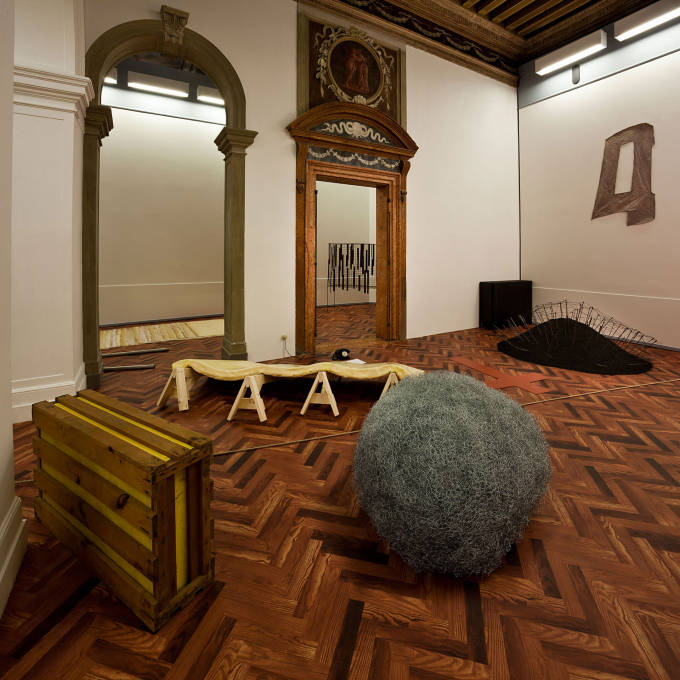
Flash back to spring 1969. At the Kunsthalle Bern in Switzerland there are shouts of protest, artists are placed under arrest, and the museum plaza is in shambles. With the opening his exhibition Live in Your Head: When Attitudes Become Form. Works – Concepts – Processes – Situations – Information, Swiss curator Harald Szeemann had sparked outrage throughout Bern. French conceptualist artist Daniel Buren was arrested while plastering striped posters throughout the city (in protest of not being invited to participate in the show). Artists in tractors deposited piles of manure in front of the Kunsthalle, while indoors, Richard Serra splashed molten lead onto a wall. But the real scandal of the exhibition was not this type of action – it was the new form of artistic process it embraced and its monumental claim to freedom.
Harald Szeemann is one of the most influential curators of the recent past. In 1961 at the age of 28, he became director of Kunsthalle Bern, bringing a brash and unconventional program to the previously soporific art institution. In 1967, the Kunsthalle became the first building for Christo and Jeanne-Claude to wrap in their signature cloth. When Attitudes Become Form is considered one of Szeemann’s most influential exhibitions, alongside the legendary documenta 5 (1972) and the Venice Biennales in 1999 and 2001. Instead of treating the exhibition as an appendage of the art industry, Szeemann raised it to a medium in its own right. The exhibition curator was thus elevated to author and the exhibition to his work. This was revolutionary.
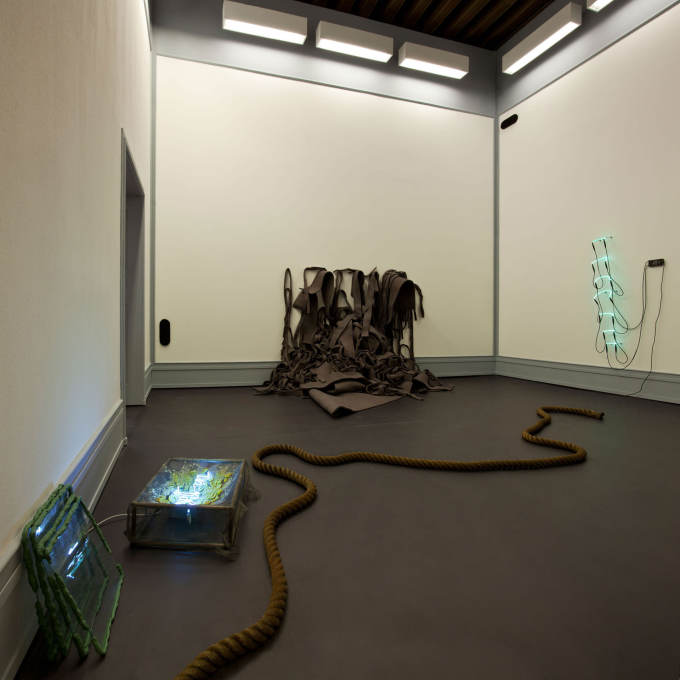
Fast forward to May 2013. Ca’ Corner della Regina Venedig. Beside a reproduced “Fettecke” (“Fat Corner”) by Joseph Beuys sit an igloo by Mario Merz and a coal-filled burlap sack by Jannis Kounellis in the baroque halls of the Venetian palace. One is reminded that for the original Attitudes, many of the European and American artists who Szeemann brought together were young and undiscovered – the likes of Richard Serra, Robert Morris, Bruce Nauman, Joseph Beuys, Mario Merz, Richard Artschwager and Lawrence Weiner. While today many of their works are considered museum collection classics, 44 years ago they were received with complete incomprehension. In the exhibition Szeemann eschewed the customary chronological or thematic order for a concept that placed the works in dialogue with one another; many of them were site-responsive works created directly at Kunsthalle Bern.
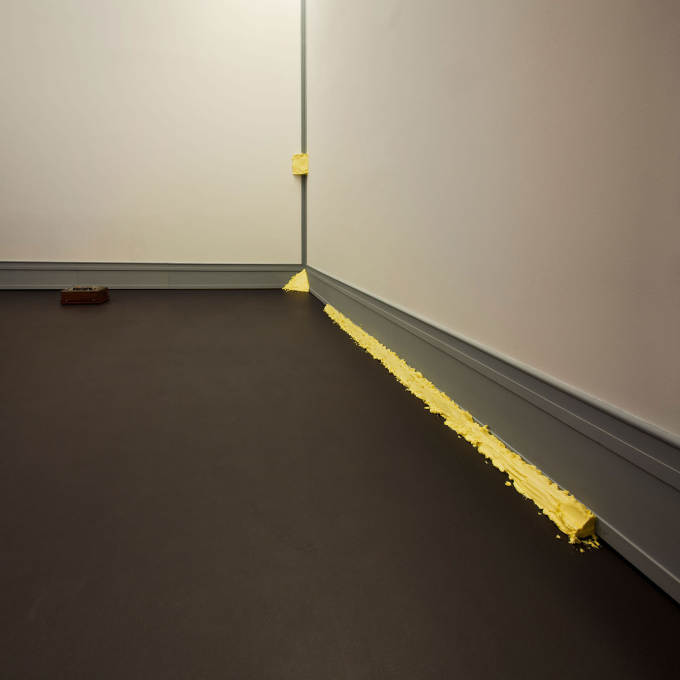
That this exhibition in particular, which signaled a turning point in the history of art, has now been restaged as its own total work of art in Venice, has many implications. For one, a certain parallel may be drawn from the fact that, just as Kunsthalle Bern was stormed by young artists in 1969, in 2013 a historical eighteenth-century palazzo has been transformed into a contemporary art space.
Or has it? The dominance of the palazzo’s eighteenth-century ceiling and wall paintings allows the exhibited art to retreat into the background. Although the original Kunsthalle Berlin floor plan has been meticulously recreated and the art works exhibited in their original arrangement, the room division of the palazzo has not been changed, lending to a general sense of dislocation. The concept does not entirely succeed – it seems as if conceptual art does need the white cube after all.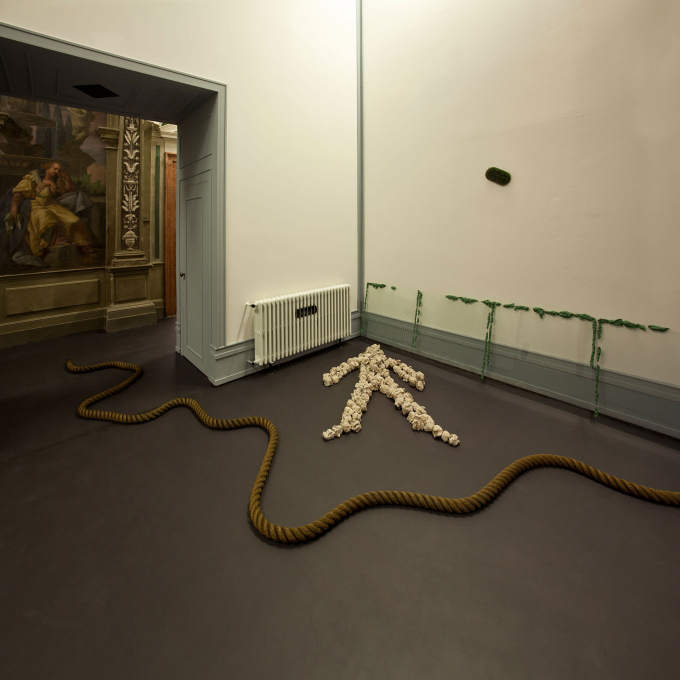
Forty-four years is a long time, and perhaps not long enough: the works’ relevance to the present remains too strong. Celant, Demand and Koolhaas have taken what might just have been the sole original exhibition of the generation of 1968 and turned it into an own work of art, a Readymade. It is a bold attempt that is bound to generate discussion reaching well beyond the realm of art historians.
For Rem Koolhaas, this seems like a warm-up just outside his playing field. Perhaps it will be telling of his treatment of next year’s Venice Architecture Biennale.
- Jeanette Kunsmann, Berlin
When Attitudes Become Form:
Bern 1969/Venice 2013
Until 3 November 2013,
daily 10 am–6 pm, Tues. closed
Calle de Ca’ Corner,
Palazzo Ca’ Corner della Regina,
30135 Venice




